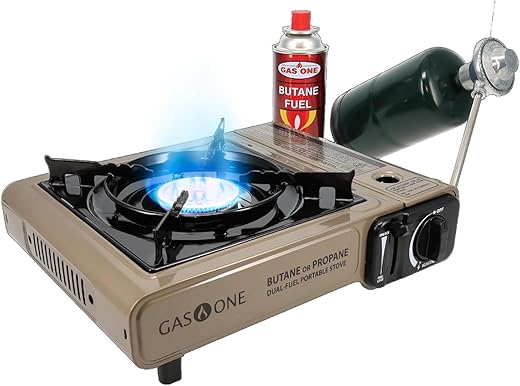
When planning a camping trip, the choice of equipment can significantly impact the experience, especially when it comes to something as essential as a camping stove. For outdoor enthusiasts, selecting the right stove material—whether stainless steel or aluminum—can make a world of difference in cooking efficiency, weight, and durability. This post aims to guide you through a detailed comparison of these two popular materials, helping you make an informed decision that aligns with your specific camping needs. Understanding the strengths and weaknesses of each option is crucial, as it can enhance your outdoor adventures and ensure you enjoy warm meals in the heart of nature. Join us as we delve into the pros and cons of stainless steel and aluminum camping stoves, so you can focus on what truly matters: making memories under the stars.



Material Overview: Stainless Steel vs. Aluminum
When choosing a camping stove, the material it’s made from plays a crucial role in its performance and durability. Stainless steel and aluminum are two popular materials used in camping stove construction, each with distinct properties affecting usability in various outdoor conditions. This section will examine both materials in detail, highlighting their strengths and weaknesses.
Properties of Stainless Steel
Stainless steel is a widely recognized material known for its durability and long-lasting properties. Here are some key characteristics:
- Weight: Stainless steel is generally heavier than aluminum. This can be a downside for backpackers who need to minimize gear weight, but the sturdiness may make it worth the extra ounces for some users.
- Strength: Stainless steel is renowned for its high tensile strength, allowing it to withstand significant stress and pressure without warping or breaking. This makes it an excellent choice for heavy-duty camping stoves, such as the Coleman Classic Propane Stove, which is designed for robust outdoor cooking.
- Corrosion Resistance: One of the superior features of stainless steel is its exceptional corrosion resistance, thanks to the presence of chromium in its composition. Even in wet or humid conditions, like those found near lakes or in rainy weather, stainless steel stoves hold up well.
- Heat Conductivity: While stainless steel is reasonably good at conducting heat, it is not as efficient as aluminum. It sometimes requires more time to reach cooking temperatures. The heavy design of these stoves, like the MSR WhisperLite, allows for even heat distribution, which many seasoned campers appreciate.
Advantages of Stainless Steel Camping Stoves
- Highly durable and resistant to physical damage.
- Excellent at resisting rust and corrosion.
- Long lifespan, often outlasting aluminum options.
- Retains heat well, maintaining cooking temperatures for longer periods.
Properties of Aluminum
Aluminum is another frequently used material in the realm of camping stoves, and it boasts some different properties:
- Weight: Aluminum is significantly lighter than stainless steel, making it ideal for backpackers and those who prioritize weight savings. For example, the Jetboil Flash Cooking System is made from aluminum and is favored for its lightweight and compact design.
- Strength: While aluminum is strong for its weight, it is generally less robust than stainless steel. This means that, while aluminum stoves are effective for light-duty cooking, they may not be suitable for heavy or rugged use.
- Corrosion Resistance: Aluminum also has good corrosion resistance, though it can oxidize over time if not treated properly. Many high-quality aluminum camping stoves, such as the Primus Lite+, come anodized to enhance durability and prevent corrosion.
- Heat Conductivity: Aluminum excels in heat conductivity, allowing stoves to heat up quickly and efficiently. This property is especially beneficial for boiling water or cooking meals in a timely manner.
Advantages of Aluminum Camping Stoves
- Very lightweight, making them ideal for backpacking.
- Offers quick heat conductivity for fast cooking.
- Often more affordable than stainless steel options.
- Anodized aluminum models provide increased durability against wear.
Comparison Table: Stainless Steel vs. Aluminum Camping Stoves
| Property | Stainless Steel | Aluminum |
|---|---|---|
| Weight | Heavier | Lighter |
| Strength | Stronger | Moderately strong |
| Corrosion Resistance | Excellent | Good (may require protective coating) |
| Heat Conductivity | Fair | Excellent |
| Durability | High | Moderate to High (depends on treatment) |
| Ideal Use | Heavy-duty, long-term camping | Lightweight, quick trips, backpacking |
Practical Examples of Camping Stoves
- Stainless Steel Example: The Coleman PerfectFlow 2 Burner Stove is crafted from stainless steel, featuring durable construction that endures rough outdoor conditions. It is designed for larger groups or extended trips, making it suitable for car camping but less practical for backpacking due to its weight.
- Aluminum Example: The GSI Outdoors Pinnacle Camper Cookset features aluminum pots and pans that nest together for compact storage and minimal weight, making it ideal for backpackers. Its quick heating properties and lightweight design ensure that meals are prepared swiftly, catering to adventurers on the go.
By understanding the properties and applications of stainless steel and aluminum in camping stoves, campers can make informed decisions that best suit their outdoor lifestyle and cooking needs.
Weight and Portability of Camping Stoves
When choosing a camping stove, weight and portability are paramount considerations that can greatly affect your outdoor experience. For those who frequently venture into the wild, such as campers, backpackers, and hikers, understanding the nuances between different materials—specifically stainless steel and aluminum—can help optimize your gear selection and improve your efficiency on the trail.
Weight Differences: Stainless Steel vs. Aluminum
Stainless steel and aluminum are the two primary materials used in the construction of camping stoves. Understanding their weight differences can help you make an informed decision based on your outdoor activities.
- Stainless Steel Stoves: Typically heavier than their aluminum counterparts, stainless steel stoves provide durability and resistance to rust and corrosion. While the added weight may be minimal for car camping, it can become a burden during multiple-day hikes. For instance, the popular Camp Chef Explorer stove weighs around 30 pounds, making it less suitable for weight-conscious backpackers.
- Aluminum Stoves: Lightweight and easily portable, aluminum stoves are favored by many backpackers. For example, the MSR PocketRocket, weighing just 3 oz, is a compact and efficient option that exemplifies how aluminum’s lightness can enhance portability. While it may not offer the same level of durability as stainless steel, advancements in aviation-grade aluminum have improved its sturdiness and resistance to damage.
Portability: A Critical Factor for Campers
When it comes to outdoor excursions, weight is only part of the equation. Portability encompasses not only the weight of the stove but also how easily it can be carried and stored during treks.
- Compact Design: Aluminum stoves generally feature a more compact design, making it easier for campers to stow them in a backpack. For example, the Jetboil MiniMo packs down into a small, travel-friendly size, weighing only 14.5 oz. This is a considerable advantage during long treks where every ounce counts.
- Carrying Straps and Handles: Some stainless steel models include carrying handles that make them easier to transport, even if they are heavier. The Cuisinart CGG-180T is a great example, coming with an integrated handle that aids in mobility. While it’s more feasible for picnics or short camping trips, the additional heft makes it less suited for a multi-day backpacking journey.
Ease of Carrying on Long Treks
When considering long-distance hikes or backpacking trips, the cumulative weight of your gear plays a significant role in your overall comfort and stamina. This is especially true when you are carrying everything on your back for several days.
- Example Products:
- Stainless Steel:
- Camp Chef Explorer: 30 lbs, best for car camping but challenging for backpacking.
- Cuisinart CGG-180T: Weighs 13 lbs; manageable for short hikes but heavy for long treks.
- Aluminum:
- MSR PocketRocket: Only 3 oz; perfect for long hikes where withstanding weight is crucial.
- Jetboil MiniMo: Weighs 14.5 oz; compact and easy to pack, enhances cooking speed and efficiency on the go.
The Impact of Weight on the Camping Experience
The difference in weight and portability between these two materials can ultimately affect your camping experience in several ways:
- Fatigue: Carrying a heavier stove could lead to fatigue during your hike, reducing your overall enjoyment of the trip. In contrast, a lighter stove can help you conserve energy and improve your hiking experience.
- Pack Efficiency: Lighter stoves allow for more efficient packing, giving you more room for other essentials like food, water, and shelter. This could mean the difference between a streamlined pack versus a cumbersome load.
| Feature | Stainless Steel Camp Stoves | Aluminum Camp Stoves |
|---|---|---|
| Weight | Heavier (e.g., Camp Chef Explorer – 30 lbs) | Lightweight (e.g., MSR PocketRocket – 3 oz) |
| Portability | Less portable; harder to pack | Highly portable; compact design |
| Durability | Highly durable; rust-resistant | Less durable but lightweight |
| Best Use Case | Car camping | Backpacking, long treks |
By weighing the pros and cons of weight and portability, you can choose the right camping stove that enhances your outdoor adventures while ensuring comfort and convenience on the trail.
Durability and Maintenance
When it comes to outdoor adventures, having a reliable camping stove can make or break your experience. Durability and maintenance are two crucial aspects to consider when choosing between stainless steel and aluminum camping stoves. Below, we’ll analyze how each material performs against various weather conditions and rough handling, while also providing maintenance tips to ensure their longevity.
Durability Analysis
Stainless Steel Camping Stoves
Stainless steel stoves are renowned for their robustness and reliability. Here are some key features:
- Weather Resistance: Stainless steel is highly resistant to rust and corrosion, which makes it an excellent choice for wet conditions. Brands like MSR (Mountain Safety Research) offer stainless steel options like the MSR Dragonfly, recognized for its ability to withstand rain and moisture without deterioration.
- Impact Resistance: Stainless steel is less prone to dents compared to aluminum. The weight and sturdiness make models such as the GSI Outdoors Ignite a favorite among campers who might drop or bash their gear.
- Heat Retention: Stainless steel excels at heat retention, providing even cooking and efficient fuel use, thanks to its ability to maintain high temperatures.
Stainless Steel Maintenance Tips
- Cleaning: After each use, clean with warm water and a gentle scrub to remove any food particles or residue. Avoid abrasive materials that can scratch the surface.
- Storage: Store in a dry environment to prevent any moisture accumulation. Using a protective bag can also help prevent scratches and dents while being transported.
- Seasoning: Occasionally apply a thin layer of cooking oil on the surface to maintain its appearance and prevent food sticking.
Aluminum Camping Stoves
Aluminum camping stoves are popular for their lightweight design and quick heating capabilities. Let’s assess their durability factors:
- Weather Resistance: While aluminum can corrode, many models come with anodized finishes that provide a protective layer. For instance, the Coleman Camp Cooker is treated to resist adverse weather, making it suitable for various conditions.
- Lightweight and Portability: Aluminum stoves are significantly lighter than stainless steel counterparts, which is beneficial for backpackers. The Jetboil Flash Cooking System is a great example, valued for its portability and ease of use, even in rough terrain.
- Susceptibility to Dents: Aluminum can be more vulnerable to dents and bends, particularly if not handled carefully. This is something to keep in mind during travel and setup in rugged environments.
Aluminum Maintenance Tips
- Cleaning: Use warm, soapy water and a soft cloth for cleaning. Avoid steel wool or harsh chemicals that can scratch the anodized layer.
- Storage: Always dry thoroughly before storing to prevent oxidation. A lightweight carry bag can help protect against impact while being transported.
- Inspecting for Damage: Regularly check for dents or cracks, especially after trips into rough areas. Early detection of damage will help you decide whether repair or replacement is necessary.
Comparison Table: Stainless Steel vs Aluminum Camping Stoves
| Feature | Stainless Steel | Aluminum |
|---|---|---|
| Weight | Heavier | Lighter |
| Rust/Corrosion Resistance | High | Moderate (depends on finish) |
| Impact Resistance | High | Moderate (more dent-prone) |
| Heat Retention | Very Good | Good (heats quickly but cools faster) |
| Maintenance | Easy, less frequent | Requires careful cleaning |
| Popular Models | MSR Dragonfly, GSI Outdoors Ignite | Coleman Camp Cooker, Jetboil Flash |
The choice between stainless steel and aluminum camping stoves depends largely on your specific needs and camping style. Each material has its own strengths and maintenance requirements, so weighing these factors will help you make an informed decision tailored to your outdoor adventures.
Final Thoughts on Camp Stove Selection
In conclusion, choosing between stainless steel and aluminum camping stoves ultimately depends on your individual needs and preferences. Stainless steel stoves are durable and resistant to corrosion, making them ideal for long-lasting use, while aluminum stoves are lightweight and heat up quickly, suiting those who prioritize portability and fast cooking. As highlighted, consider factors like weight, durability, heat conductivity, and ease of cleaning when making your decision. We recommend evaluating your specific camping scenarios—be it backpacking, car camping, or cooking style—to find the right fit for you. Ultimately, weighing the pros and cons of each material will help ensure you select a camping stove that enhances your outdoor cooking experience.



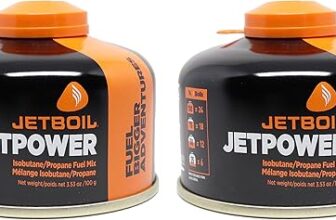
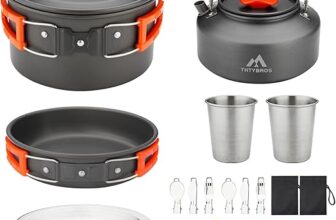
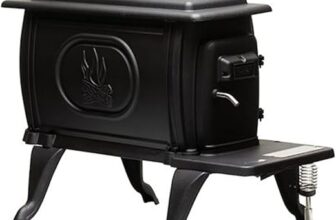
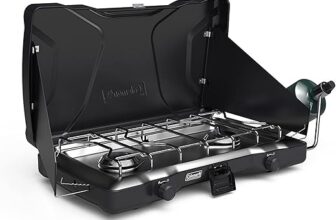


Great question! It really depends on your camping style. Stainless steel stoves, like the Camp Chef Explorer, are fantastic for heat retention but can be heavy. Aluminum options, such as the MSR PocketRocket, are super light but can sometimes lose heat faster. It’s all about finding the right balance for your needs!
Can anyone recommend a good aluminum camping stove? I’ve been looking at the Jetboil MiniMo, but I’m not sure if it’s the best choice. Any thoughts?
The Jetboil MiniMo is a solid pick! It’s compact, efficient, and perfect for quick meals. If you’re looking for something a bit more versatile, the Coleman Alpine is another great aluminum option with more cooking space. Hope that helps!
I took my stainless steel camping stove (a Primus Tupike) on a week-long trip, and it held up like a champ! It got a bit scratched but still works perfectly. I love how it distributes heat evenly! Anyone else had success stories with their stoves?
That’s awesome to hear! The Primus Tupike is a reliable choice, and it sounds like it served you well on your trip. I love hearing success stories like yours! It really shows how durable these stoves can be, especially in rough conditions. Keep sharing your adventures!
I always hear people arguing over stainless steel vs. aluminum stoves. Some say stainless is the way to go for better heat retention, but aluminum is so much lighter! What do you guys think? Anyone had bad experiences with either material while out in the wild?